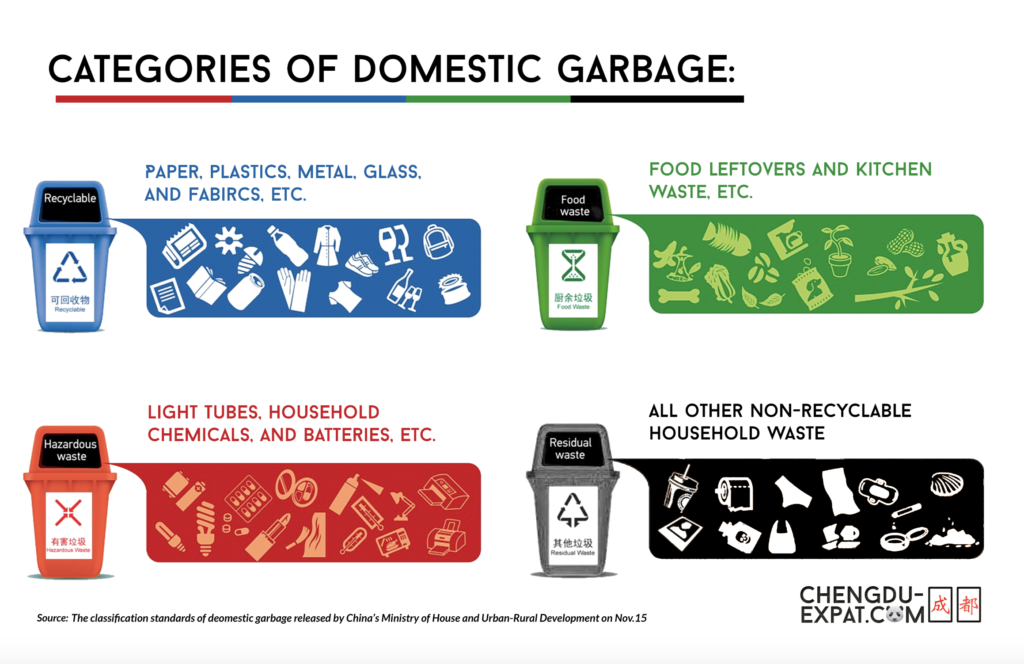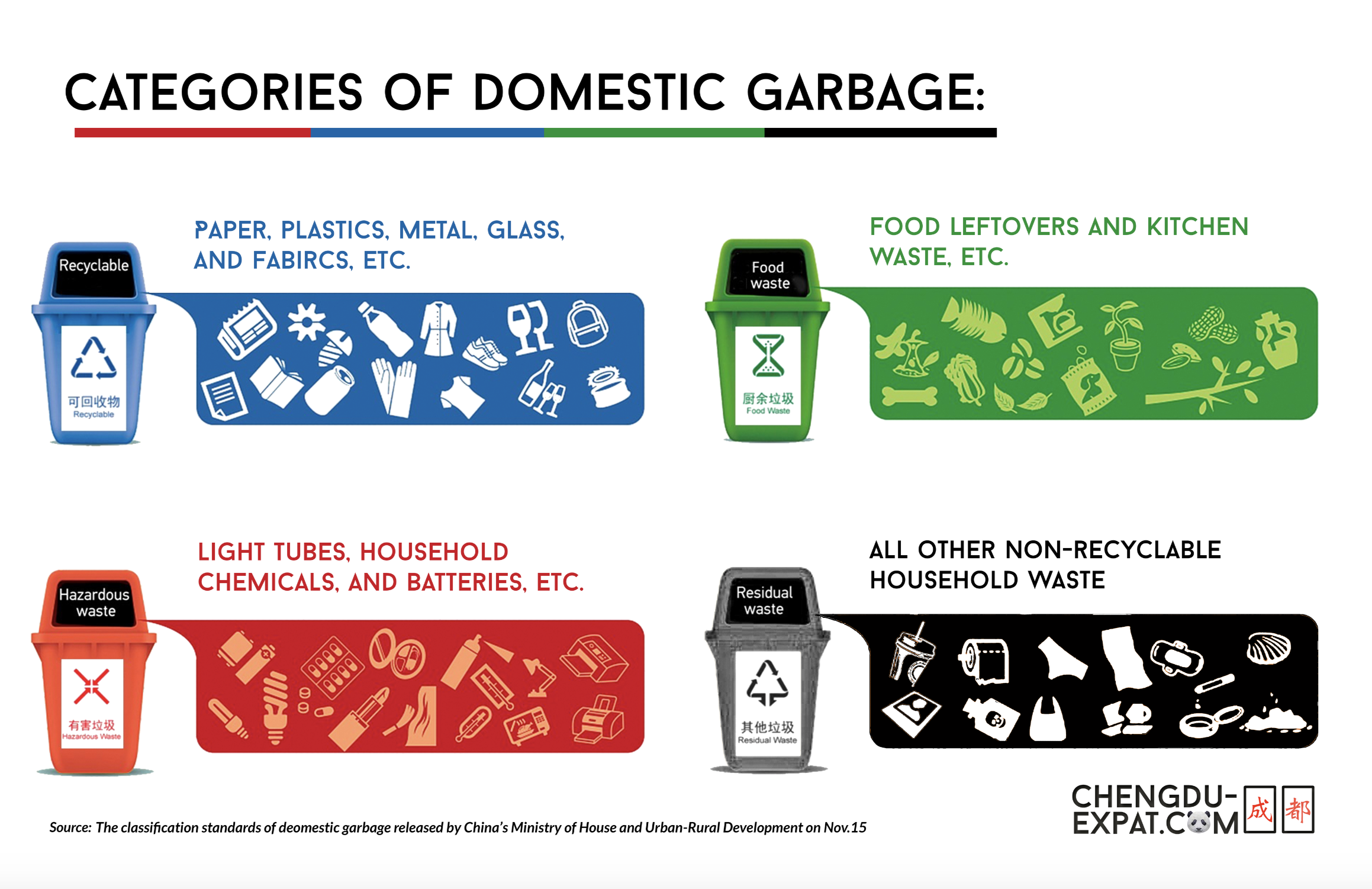Garbage is an unavoidable problem for any city, and an even bigger problem for the world. At present, the best way to manage it, is to sort it by type. We all have a part to play in creating efficient waste management systems – as we all create waste.
Cities like Shanghai and Beijing implemented garbage sorting, and recycling last year, and it seems Chengdu is about to follow in 2021. It had announced originally that it would begin LAST year – but this was then postponed to TODAY. As we can all tell, Chengdu seems off to a false start. Manmanlai.
Chengdu: Domestic Waste Classification Guide
In Chengdu, we are yet to see many changes in our compounds, or work places – but we wanted to give you a heads up, so you understand the colour-coded system:
1) Recyclables:
This refers to waste in your everyday life or the things produced in your activities that provide services in your daily life, which have already lost all or part of the original usage value. After recycling, they can be reprocessed into production materials or re-used after finishing, including wastepaper, plastics, glass, metals, used electronics, fabrics etc.
2) Kitchen Waste:
This refers to the vegetable leaves, fruit peels, and fruit cores produced in the family, as well as leftovers and perishable garbage such as unused wasted food. Food residue, food processing waste, and oils produced during food processing, catering services, workplace departments, and canteens in military units, schools, enterprises and institutions engaged in catering operations. As well as fruit and vegetable garbage, this also includes rotten meat, meat bones, aquatic products, livestock and poultry from farmers’ markets, etc. Please note that oil waste refers to non-edible animal and vegetable oils and oil-water mixtures.
3) Hazardous Waste:
This refers to the toxic and hazardous substances in household garbage, which primarily includes used batteries (cadmium nickel batteries, mercury oxide batteries, lead storage batteries etc.), fluorescent lights (fluorescent lamps, energy-saving lamps etc.), used thermometers, blood pressure devices, medicines, packaging, paints, solvents (and its packaging), pesticides, disinfectant (and its packaging), used film and photo paper, etc.
4) Other Waste:
This refers to household waste other than kitchen waste, recyclables, hazardous waste, and domestic waste that is difficult to identify/classify.
Images: CGTN.
Sources: SCMP, CGTN.




